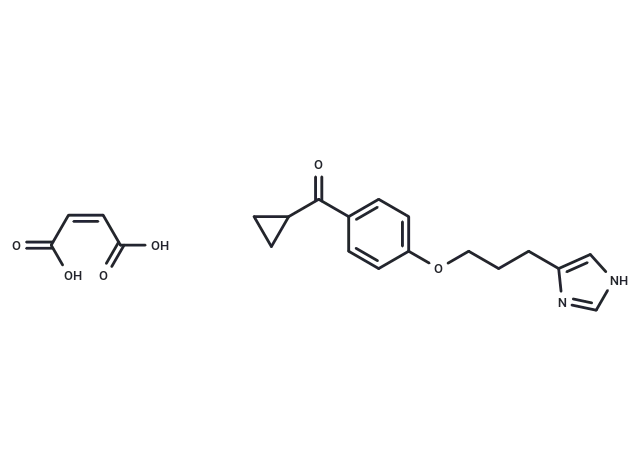Download Files:
Ciproxifan maleate
58 CAD – 1,003 CADPrice range: 58 CAD through 1,003 CAD
Products Details
Product Description
– Ciproxifan maleate (FUB 359)(FUB-359 maleate) is a highly potent and selective histamin H3-receptor antagonist with IC50 of 9.2 nM, with low apparent affinity at other receptor subtypes.
Web ID
– T2004
Storage Temperature
– -20℃
Shipping
– Blue Ice
Molecular Formula
– C20H22N2O6
Citations
– 1. Xie L, Wu Q, Hu W, et al. Impact of histaminergic H3 receptor antagonist on hypoglossal nucleus in chronic intermittent hypoxia conditions. Psychopharmacology. 2020: 1-11
References
– Ligneau X, et al. J Pharmacol Exp Ther, 1998, 287(2), 658-666.
CAS Number
– 184025-19-2
Molecular Weight
– C20H22N2O6
Compound Purity
– 0.9945
SMILES
– OC(=O)C=C/C(O)=O.O=C(C1CC1)c1ccc(OCCCc2c[nH]cn2)cc1
Target
– HIV Protease|||CCR
Pathway
– GPCR/G Protein|||Immunology/Inflammation|||Neuroscience
Product type
– Small Compound
Disclaimer: All products are for Research use only unless clearly stated otherwise on the product datasheet. Datasheets provided on the website are drafts for reference purpose only and you are requested to always refer to the hard copy included in the kit for your experimentation. Agdia Products are available for delivery only in Canada.
Related Products
1000 in stock
Sodium Nitroprusside
64 CAD – 139 CADPrice range: 64 CAD through 139 CAD
1000 in stock
1000 in stock






